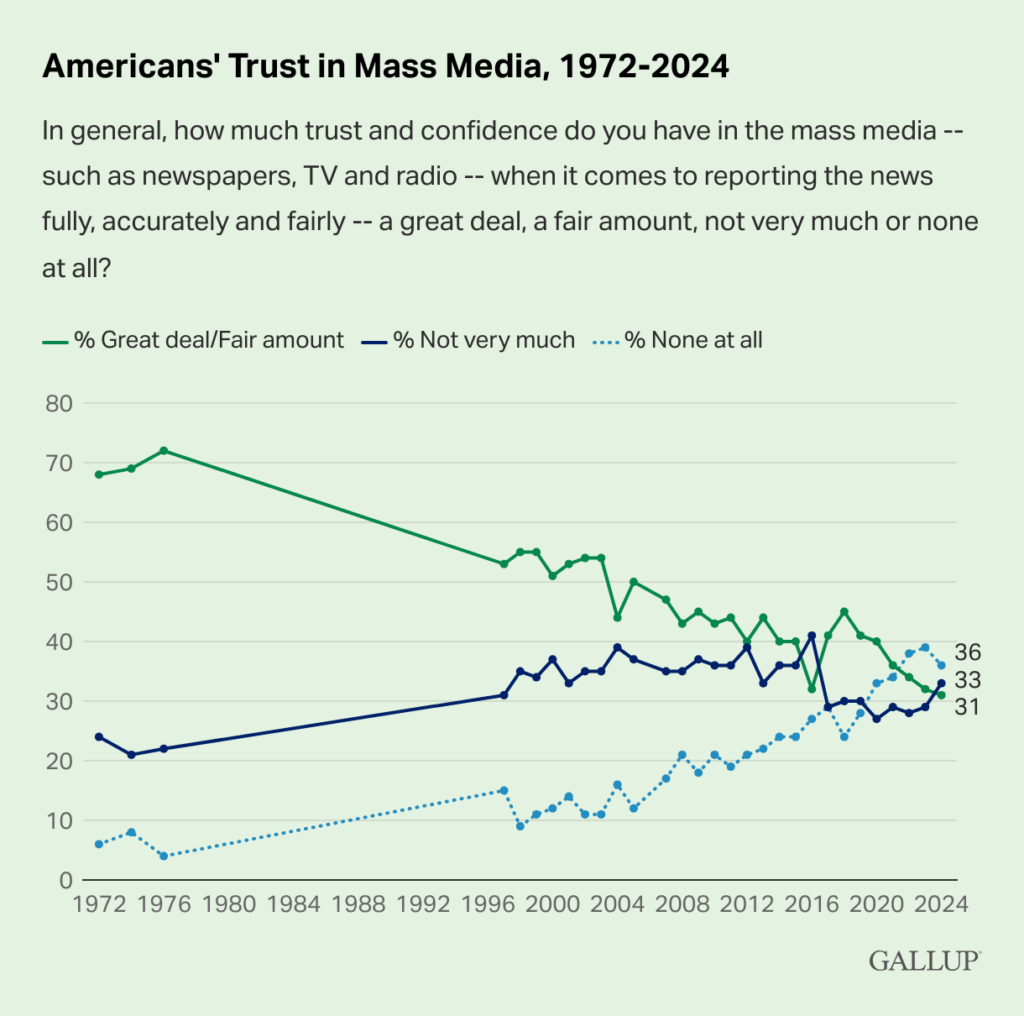By now, you’ve heard about the power of new media to influence, transform, and forge deeper connections with audiences. Platforms like TikTok, YouTube, X, Substack, Applovin, and AI-powered search excel in one key area: speed. Their rapid content creation and fast-paced news cycles are reshaping how consumers engage with brands—and how brands approach the market.
In contrast, traditional media stands at a pivotal moment of recalibration and change. From election campaigns to BFCM eCommerce strategies and the rise of a new administration, the shifting media landscape is reshaping how brands must adapt. History shows it’s never about relying on a single channel but finding the right mix to drive success. Brands, marketers, and public figures, take note: your ability to thrive depends on how well you embrace and navigate this evolution.
Legacy vs. New Media: A Structural Divide
Legacy media refers to traditional outlets like newspapers, TV networks, and radio broadcasters that built their influence through centralized production and institutional authority. These organizations rely on hierarchical structures and decades of trust-building. They are household names to a certain generation, but quickly losing steam, marketshare, and share of voice.
In contrast, new media thrives on decentralization and user-driven content creation. Platforms like YouTube, TikTok, and Substack have removed the barriers to entry, allowing creators to reach millions with nothing more than a smartphone. The appeal of new media lies in its immediacy, relatability, and the authenticity of its creators.
This structural difference has shifted audience expectations. Viewers and readers no longer want a one-size-fits-all narrative dictated by a single institution. They crave dynamic, tailored content that feels personal and accessible.
Why New Media is Winning
New media’s strengths are undeniable:
- Speed and Accessibility: Platforms like X (formerly Twitter) and TikTok deliver real-time information faster than traditional outlets ever could. Breaking news, cultural moments, and viral content all originate in digital spaces where audiences congregate. Legacy outlets can’t compete with this immediacy.
- Authenticity and Relatability: Influencers and creators resonate with audiences because they appear authentic and approachable. Legacy media often feels distant and corporate, a tone that increasingly alienates younger, digital-native audiences.
- Interactivity and Engagement: New media thrives on two-way communication. Platforms encourage dialogue, foster communities, and allow audiences to actively participate in shaping the narrative. Legacy media’s top-down model, where information flows in one direction, feels outdated by comparison.
- Niche Appeal: While traditional outlets aim for broad appeal, new media succeeds by targeting specific interests. Whether it’s a podcast dissecting obscure economic theories or a YouTube channel devoted to gardening, new media offers something for everyone.
The Decline of Legacy Media
Legacy media’s challenges stem not only from external competition but also from its own inability to adapt. Trust in traditional outlets is at an all-time low. The 2024 Gallup Poll Social Series (GPSS) reported that Americans continue to register record-low trust in the mass media” — such as newspapers, television and radio — “with 31% expressing a “great deal” or “fair amount” of confidence in the media to report the news “fully, accurately and fairly.”

Recent missteps by legacy media outlets highlight the urgency for change:
- Perceived Bias: Political reporting by traditional outlets has increasingly alienated large portions of their audiences. Trust in these institutions is often starkly divided along partisan lines, leaving significant segments of the public skeptical of their credibility.
- Failure to Engage Younger Audiences: Despite strong journalistic foundations, many legacy outlets struggle to connect with younger, digital-first readers. Reports show that younger audiences often view these outlets as out of touch, gravitating instead toward relatable, creator-driven platforms that better align with their expectations.
These challenges underscore a critical reality: legacy media’s top-down approach no longer resonates in an environment where audiences expect transparency, dialogue, and relevance.
The New Media Opportunity
New media isn’t just outperforming legacy outlets; it’s reshaping the media ecosystem. Platforms like TikTok and Instagram have become cultural epicenters, shaping trends, driving conversations, and influencing public opinion. Citizen journalism on platforms like X has made news more immediate, with viral threads often breaking stories faster than traditional outlets.
However, new media isn’t without its flaws. The rapid spread of misinformation, the echo chamber effect, and a lack of accountability are significant issues. These challenges present an opportunity for collaboration between new and legacy media—if legacy outlets are willing to adapt to the digital-first mindset.
Strategies for Legacy Media in a New Media World
Legacy media must stop viewing new media as a competitor and start learning from it. By adopting the strategies that make new media so compelling, traditional outlets can remain relevant.
- Embrace Decentralization: Legacy media should empower individual voices within their organizations to engage directly with audiences. By encouraging journalists, analysts, and creators to build their own personal brands, they can compete with the authenticity of new media creators.
- Leverage New Media Tools: Podcasts, short-form video, and live streaming are no longer optional—they are essential. Legacy outlets must meet audiences where they are, adopting the formats that dominate digital platforms.
- Engage in Real-Time: Audiences expect immediacy. Legacy media should invest in real-time reporting and interactive formats, such as live Q&A sessions or Twitter Spaces, to foster engagement and build loyalty.
- Prioritize Niche Audiences
Instead of chasing mass appeal, legacy outlets should develop content for specific interests, mirroring the success of new media creators who cater to niche communities. - Address Bias Transparently: Perceived bias has eroded trust in legacy media. Outlets must openly address concerns, implement visible efforts to ensure balanced reporting, and communicate those efforts directly to their audiences.
Looking Ahead
The rise of new media isn’t a threat—it’s a wake-up call for brands, marketers, and the media itself. Legacy media must recognize that the rules of the game have changed. Institutions built on authority must now earn relevance through relatability and adaptability.
For audiences, new media represents a more diverse, inclusive, and engaging form of storytelling. For businesses, it’s a model that offers unparalleled reach and personalization. By aligning with the energy of new media while maintaining a commitment to accuracy and accountability, legacy outlets can position themselves not as competitors but as collaborators in the evolving media ecosystem.
In a world where immediacy and authenticity rule, new media has already claimed the future. Legacy media’s survival depends on its willingness to embrace this reality—and to reinvent itself as part of the revolution.







